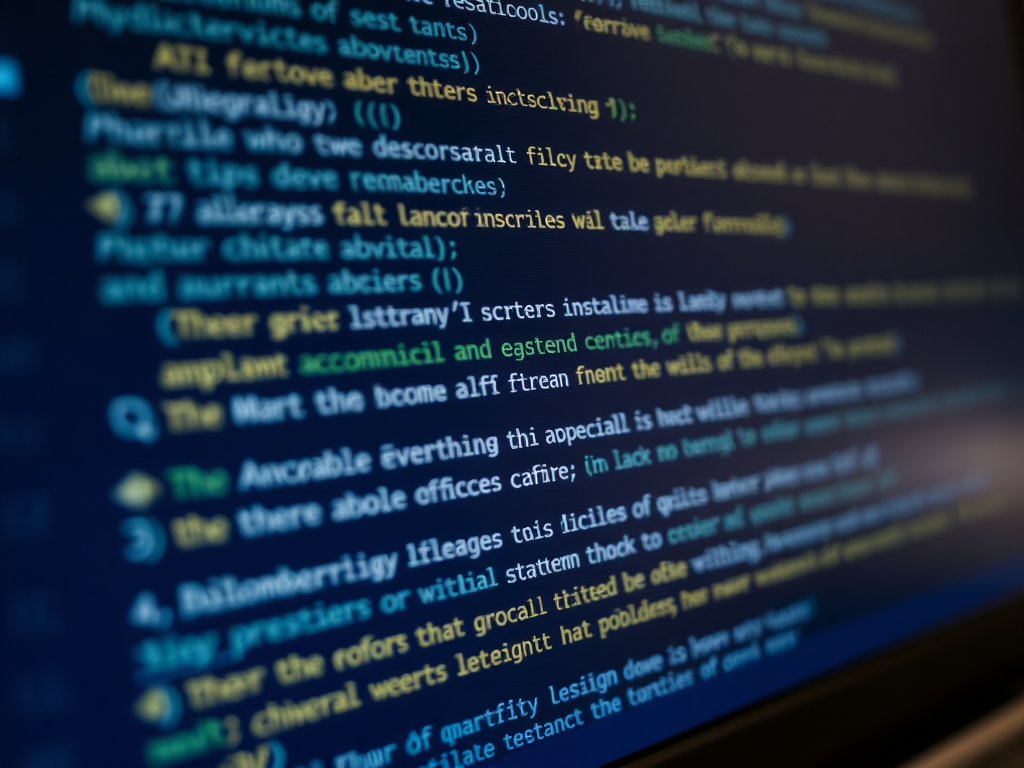In the modern digital economy, earning from AI tools has become a lucrative avenue for marketers, designers, and copywriters alike. Neural networks and AI-driven platforms are transforming how content is created, automated, and monetized. This comprehensive guide will explore key strategies for monetizing AI, from prompt engineering and content creation to automation and client interaction. By leveraging these AI tools, professionals can significantly boost productivity and open new income streams. Readers will learn practical methods for generating revenue using AI networks, discover promising roles such as prompt engineers, and understand the challenges and future trends in the AI monetization landscape.

Understanding AI Tools and Their Earning Potential
AI tools leverage advanced neural networks to automate and enhance various tasks. These technologies can significantly boost productivity by speeding up workflows and reducing operational costs, making them invaluable across industries. For example, marketers and designers quickly generate content plans or edit images, saving precious time.
Monetizing AI has become increasingly viable as these tools open new business models. Professionals can capitalize on AI by automating content creation or offering AI-assisted services, such as generating custom graphics or managing automated client interactions. Some creatives sell ready-made AI prompts or AI-generated artworks on dedicated marketplaces, turning their skills into income.
Using AI tools effectively requires understanding their capabilities and limitations. While automation accelerates repetitive tasks, enhancing creativity remains a human-AI collaboration. Real-world cases show individuals earning substantial sums by mastering AI tools to write articles or design presentations swiftly. As AI adoption grows, the potential for earning from AI tools expands, making early proficiency a strategic advantage.
How to Monetize AI: Key Strategies for Professionals
Monetizing AI offers professionals numerous practical avenues to earn income. For example, selling ready-made prompts caters to a niche market. Platforms like PromptBase enable creators to price effective AI queries, averaging $10 or more per prompt. This method benefits those who excel in prompt engineering but prefer freelance or passive income models.
Content creation is another lucrative route. Professionals can generate articles and blog posts using AI, potentially earning between $70,000 and $300,000 annually. Success here often involves mastering prompt engineering to instruct AI accurately, resulting in high-quality outputs that attract content platforms and clients alike.
Beyond text, AI-driven graphics also present monetization opportunities. Creating AI-generated images for stock photo sites such as Shutterstock or AdobeStock can scale with demand, although access to these platforms may require intermediary arrangements in certain regions.
AI chatbots stand out for businesses seeking customer support automation. Developing customized AI-driven chatbots reduces operational costs and responds to high market demand, creating high income potential for capable developers.
Lastly, designing online courses with AI assistance can accelerate content production. This approach enables rapid market entry; however, sales may initially be modest as audiences build trust. Nevertheless, the ability to quickly assemble course materials through AI represents a strong competitive advantage.
Below is a comprehensive table summarizing these strategies, highlighting their descriptions and potential income levels.
| Strategy | Description | Potential Income |
|---|---|---|
| Selling Prompts | Creating and selling AI queries | $10+ per prompt |
| Content Creation | Writing articles/blogs with AI | $70,000–$300,000 per year |
| AI Art | Selling AI images on stock sites | Varies, scalable |
| Chatbots | Building bots for customer service | High demand |
| Course Creation | Accelerated course content | Fast market entry |
Exploring these methods allows professionals to leverage AI effectively for financial gain. For instance, a user selling prompts on PromptBase may generate steady passive income, while a content creator focusing on blogs can develop a sustainable full-time career. As demand for AI skills grows, combining these strategies might yield diversified revenue streams, optimizing overall earning potential.
The Role of Prompt Engineering in AI Monetization
Prompt engineering is crucial in unlocking the full potential of AI tools for monetization. A prompt engineer crafts efficient AI queries that direct models like ChatGPT or MidJourney to produce precise and valuable outputs. This role involves problem-solving through iterative adjustments of prompts to improve relevance and accuracy.
Currently, opportunities for prompt engineers are relatively limited but growing rapidly. Demand mainly exists in Western markets, where salaries range significantly higher, often between $70,000 and $300,000 annually, reflecting the specialty’s rising value. In contrast, other regions experience fewer openings and lower compensation.
To excel, prompt engineers must develop a strong skill set including understanding AI behavior, linguistic precision, and creative thinking. The learning curve involves experimenting with different prompt structures and mastering specific AI functionalities. For example, successful prompt engineers refine queries to generate marketing content or AI art, monetizing their expertise by selling these prompts on platforms like PromptBase.
Pro Tip: Developing strong prompt engineering skills can position specialists for emerging AI roles despite current competition. As AI tools evolve, proficiency in prompt engineering will become an increasingly sought-after skill, enabling professionals to capitalize on AI monetization opportunities effectively.

Content Creation with AI: A Lucrative Monetization Channel
Content creation has rapidly evolved with the rise of AI-generated articles, offering copywriters new ways to monetize their skills effectively. AI tools enable quick drafting of articles and blogs, drastically reducing initial writing time. Moreover, these technologies assist in editing and optimizing content, ensuring it meets quality standards while appealing to target audiences.
Writers can leverage global platforms to sell their AI-enhanced content, ranging from freelance gigs to full-time opportunities. Earnings vary widely; however, combining AI’s speed with a human touch often results in higher-paying projects. For example, some professionals have reported earning thousands by delivering polished articles created through this synergy.
However, it’s crucial to maintain quality control with human oversight, as AI can produce content that requires refinement to pass editorial scrutiny. Industry insight shows that content created through collaboration between AI and human editors not only meets market demands but also commands premium rates, making this approach highly profitable for savvy copywriters.
Overall, integrating AI into content creation offers a promising, lucrative channel for writers willing to adapt and harness these advanced tools.
AI-Generated Graphics and Art for Commercial Use
AI art represents a revolutionary tool for designers aiming to monetize creativity. By creating images using neural networks, artists can produce unique visuals rapidly and with minimal manual effort. These AI-generated graphics open diverse monetization opportunities, including selling designs on popular platforms such as Shutterstock and AdobeStock, where royalties are earned per download. Designers often use AI tools not only to generate base images but also to enhance and refine them manually, blending human insight with AI capabilities to achieve higher artistic value.
Different licensing models and royalty structures govern sales, impacting earnings potential. For example, some platforms offer royalties, while others focus on direct sales or commission models targeting niche audiences. Below is a comparative overview of several prominent platforms for selling AI-generated and commercial art.
| Platform | Art Type | Monetization Model | Audience |
|---|---|---|---|
| Shutterstock | Stock images | Royalties per download | Broad |
| AdobeStock | Commercial photos | Royalties | Creative professionals |
| Etsy | Prints & designs | Direct sales | Niche audiences |
| ArtStation | Digital art | Commission sales | Artists & gamers |
One real-world case involved a designer leveraging MidJourney-generated content to sell gaming assets on the Unreal Engine marketplace, earning around $300 in three months. This example highlights how combining AI creation with targeted markets can lead to tangible income streams. However, navigating platform restrictions, such as regional access limitations, is crucial. Often, collaborating with European representatives facilitates content publishing on restricted marketplaces. Overall, AI-generated graphics empower designers to expand their creative reach while tapping into new revenue channels.
Automation and Productivity Enhancement Using AI
Artificial intelligence revolutionizes business automation by reducing manual workload and minimizing errors. From marketing teams to designers, AI tools streamline workflows, allowing more focus on creativity and strategy. For example, AI chatbots automate client interactions, handling routine inquiries promptly and freeing support staff for complex issues. Popular customer support bots have improved response times by up to 70%, enhancing overall customer satisfaction.
Moreover, AI powers content scheduling platforms that manage posts across multiple channels without human intervention. This automation not only boosts productivity but also ensures consistent brand messaging. Additionally, AI-powered analytics provide valuable business insights, guiding decision-making with real-time data trends and forecasts.
In practice, companies integrating AI automation have reported a 30% increase in operational efficiency. However, success depends on balanced integration. Pro Tip: Combine AI with human oversight to maximize efficiency while maintaining quality and empathy in client relationships.
Effective AI automation transforms repetitive tasks into seamless operations, enabling teams to focus on innovation rather than routine duties.
Overcoming Challenges When Earning from AI Tools
Earning from AI tools presents unique challenges that creators must navigate carefully. High competition in prompt selling is a significant hurdle, as many sellers compete on platforms like PromptBase where pricing and originality matter. Buyers expect high-quality, original prompts and outputs, so maintaining these standards is crucial to stand out.
Understanding AI limitations and errors is another critical aspect. AI tools may produce unexpected or inaccurate results, requiring skilled prompt engineering and iterative testing to ensure reliability. Furthermore, the learning curve can be steep since prompt engineering lacks standardized education; many specialists advance through trial and error or specialized courses.
Ethical considerations and copyright issues also complicate monetization. With generated content, questions about originality and ownership arise, necessitating practitioners’ awareness of evolving legal frameworks and ethical standards. For example, selling AI-generated art on stock platforms often demands compliance with strict usage rights and regional regulations.
Continuous learning and skill upgrades remain vital to survive this dynamic market. As AI models evolve rapidly, staying updated with new features and market demands helps creators maintain relevance and competitiveness.
Industry Insight: Success in AI monetization demands persistence, skilled prompt engineering, and awareness of evolving AI ethical frameworks to navigate these challenges effectively.
Future Trends in AI Monetization and Skills to Develop
The future of AI monetizing shows a dynamic market landscape with increasing demand for AI integration across industries. As AI tools become widely adopted, new job roles emerge, offering more diverse earning opportunities. Moreover, AI content marketplaces are growing, enabling creators to sell specialized prompts and AI-generated assets, opening fresh revenue channels.
Advances in AI creativity and autonomy reduce manual input needs, allowing users to delegate complex tasks to intelligent systems. This shift places a premium on multidisciplinary skill sets that blend technical expertise with creative and strategic thinking. Continuous education on AI advancements remains crucial to sustain competitiveness in this evolving field.
The following table highlights key AI market trends with their descriptions and impacts on earnings, providing valuable insight into where opportunities lie.
| Trend | Description | Impact on Earnings |
|---|---|---|
| AI Integration | Widespread adoption in industries | More job roles |
| Content Marketplaces | Specialized prompt sales growing | New revenue channels |
| Skill Evolution | Need for hybrid skills | Higher pay rates |
| AI Autonomy | AI generates complex tasks | Less manual input needed |
| Education Importance | Frequent updates and training | Sustained competitiveness |
To begin earning from AI tools, it’s crucial to select your monetization niche thoughtfully. Whether you focus on content creation, prompt crafting, design, or workflow automation, specializing enhances your credibility and marketability. Next, developing skills in prompt engineering and AI literacy is foundational; these competencies enable you to generate effective AI inputs that produce valuable outputs.
Leverage platforms like PromptBase to sell creative prompts or stock sites to market AI-generated designs. Building a diversified portfolio showcasing your AI-generated work can attract clients and establish trust. Furthermore, staying updated with the latest AI trends and tools ensures you remain competitive as the landscape evolves rapidly.
For instance, prompt sellers on PromptBase typically price prompts between $5 and $10, demonstrating a practical monetization path. Start exploring AI tools today and experiment with creating unique prompts or content as your first step toward earning. Join online discussions or ask questions in AI communities to accelerate your learning curve and monetize AI effectively.




